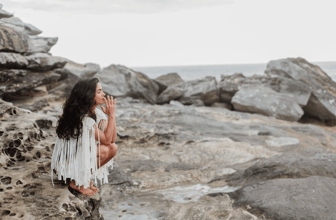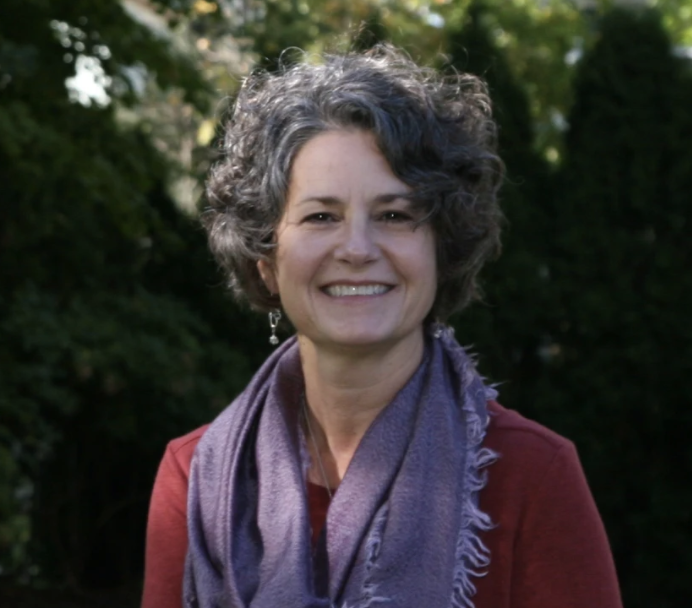
When we get stuck in conflict with another person we typically try to think our way out of it, which often has a bandaid effect rather than creating true resolution. Using our intellect to work through a problem is an incomplete approach to truly shift out of the judgment that is inherent in conflict. I say that it is incomplete because creating and experiencing conflict does not solely involve the way we think. It arises out of and impacts their way of feeling emotionally and physically.
In order to sustain a position in an argument, people often activate and ride a cognitive-emotive loop that keeps them in conflict. That is to say that they hold fast to a particular thought or belief that has a particular set of emotions associated with it, along with a visceral physical experience. These components of the experience feed off of each other and cycle around over and over, usually intensifying, and keeping the conflict going.
When stuck in conflict and in the grip of that powerful cognitive-emotive loop, we don’t really have access to solutions. If you try to think your way out of this loop, you are leaving two important components unattended and ignored. Though you may be able to reason your way to conceptually understanding someone else’s perspective and come to an agreement, it will not be a whole-body agreement. Your mind is thinking, “I want to stop the way I am feeling. If I make an agreement, I will feel better.” From this mindset, you make an inauthentic agreement because it is not based in creativity and openness, but from fear and avoidance. Though you achieved temporary relief, your body does not forget and it will remind you that something is not right. When your whole body is not in agreement with a decision, rest assured that drama will erupt again and the conflict will repeat.
So what is the solution to this dilemma? Your body is the key. Your body cannot lie. It is fully authentic and it’s response to its experiences is automatic, instantaneous and reliable. It tells you exactly where you are at any given point in time. That is what makes it such a wonderful GPS for navigating conflict.
Our bodies react to certain types of emotion in patterns of physical sensations. Generally, each of the main emotions of anger, sadness, joy, fear and sexual/creative feelings occur in certain parts of our bodies. Typically they manifest as follows:
Anger - Tension or gripping/clenching in jaw, neck and shoulders. Heat throughout body.
Sadness - Achiness in chest and lump in throat (achiness too), tears in eyes. Heat in face.
Fear - Belly tossing and turning or gripping. Cold sweat. Weakness in limbs. Lightheadedness, Sleepiness.
Joy - Expansiveness in chest and whole body - lightness, effervescence
Sexual/Creative - Heat and tingling/excited feeling in the pelvic area and lower gut. Tingling aliveness in many different areas.
These are just general associations. Each person has their own unique cocktail of how emotions manifest in their body and how those sensations arise in patterns. For instance, when I am about to do something that I don’t want to do and don’t know how to do, my body reacts in this pattern:
- Fear - liquidy, swirling feeling in my belly.
- Sadness - achy chest and throat, tears in my eyes
- Anger - tension in my throat and jaw
- Fear - full-body weariness and feel like I need a nap, but don’t sleep
- Rinse and repeat
I have become familiar with this pattern by watching myself over and over again in reactivity during arguments where I am being asked/told to do something in a way that doesn’t feel right for me. How is this useful? It helps me make better choices when in conflict. When I notice this going on inside of me, I stop arguing and give myself time to feel what I am feeling. I take a break from the conversation and breathe and let the sensations arise and pass through. Sometimes it takes several attempts. I might re-engage and notice the sensations flooding my system again. Then I take another break. I do this because I know that when my body is activated in this way, I cannot be fully present. I know that I am not open-minded, curious or open-hearted and know that I will not create a sustainable solution from that state of mind and body.
To be honest, I often don’t even notice the pattern until I have agreed to something I don’t want to do, and find myself feeling teary and truly exhausted. When I let it go this far, I give myself permission to surrender - letting the tears flow and then take a short nap. Reliably I awaken, rested and clear. Usually followed by the thought “There I go again. I agreed to do something I didn’t really want to do.” With this awareness I renegotiate a new agreement.
When I am not paying attention to this pattern, I muscle through instead of letting the emotions and energy pass through. My body holds lingering tension and fear-based sensations heightening my reactivity, and inevitably an argument ensues and the conflict recycles. With deeply embedded cognitive-emotive patterns, it can take several cycles of reactivity and body-awareness to break the cycle for good. It DOES work if you keep at it.
In order to develop body awareness as a tool to resolving conflict in your life, begin by paying attention to your physical reaction to thoughts that you have in regular activities throughout your day under different conditions. Notice what is happening in your body when:
- Slowly awakening in the morning with a nice easy body stretch vs leaping from bed at the sound of a harsh alarm.
- Standing in line for your morning latte chatting casually with another patron vs days when you are running late and the person in front of you has a huge order
- Confidently presenting your ideas in your weekly pitch meeting vs feeling unprepared when a question is directed at you
It is tremendously effective to start with everyday experiences, becoming familiar with your body sensations when you are not triggered contrasted with when you are in reactivity. This allows you to practice during less intense experiences that allow for processing on the spot. If you know what it feels like to happily wait in line for your latte, you can more readily notice when you are agitated. You might notice the knot tightening between your shoulder blades and your tense shoulders rising up toward your ears and then decide to breathe and let the tension release. This does not change the fact that the line is moving slowly or that you are running late, but it does change the way you experience it. Instead of feeling angry at the person taking so much time to order in front of you and wishing and willing them to speed up, you can assess the situation and maybe choose to forgo your cup of joe until after your first meeting.
By practicing this in everyday experiences you develop a skill that you can call upon in the midst of conflict. When you are in an argument that just won’t end, you now have a choice to locate yourself and then take responsibility for managing your reactivity. Notice your tensed shoulders and clenched jaw and STOP! Excuse yourself and take some time to BREATHE, notice the sensation, watch it dissipate and re-engage with clarity and curiosity. When your body is relaxed and you mind open, you can be aware of your own opinion while also being receptive to other perspectives. From this space, agreements can be made and trusted.
Eventually, during discussion your awareness can become more nuanced, where you notice micro-reactions in real time. Someone makes a suggestion and there is a flash of pain in your back. Don’t ignore it. Follow it. You might think “Ah, anger is here. What is it about this suggestion that does not align with my preferences and needs?” The key here is that YOUR body is YOUR guide. It is not saying that the other person needs to do something differently or that they are the cause of your experience. Your body is telling you what is happening in you as a result of what YOU are thinking. Communicate that you noticed anger arise and wonder with the other person to what you are reacting. They just might be able to ask you a few pointed questions that help you gain clarity. In this way, you engage your body and others as your allies in creating the experience you want. Instead of decision making from reactivity, you are now finding solutions and creating connections.

